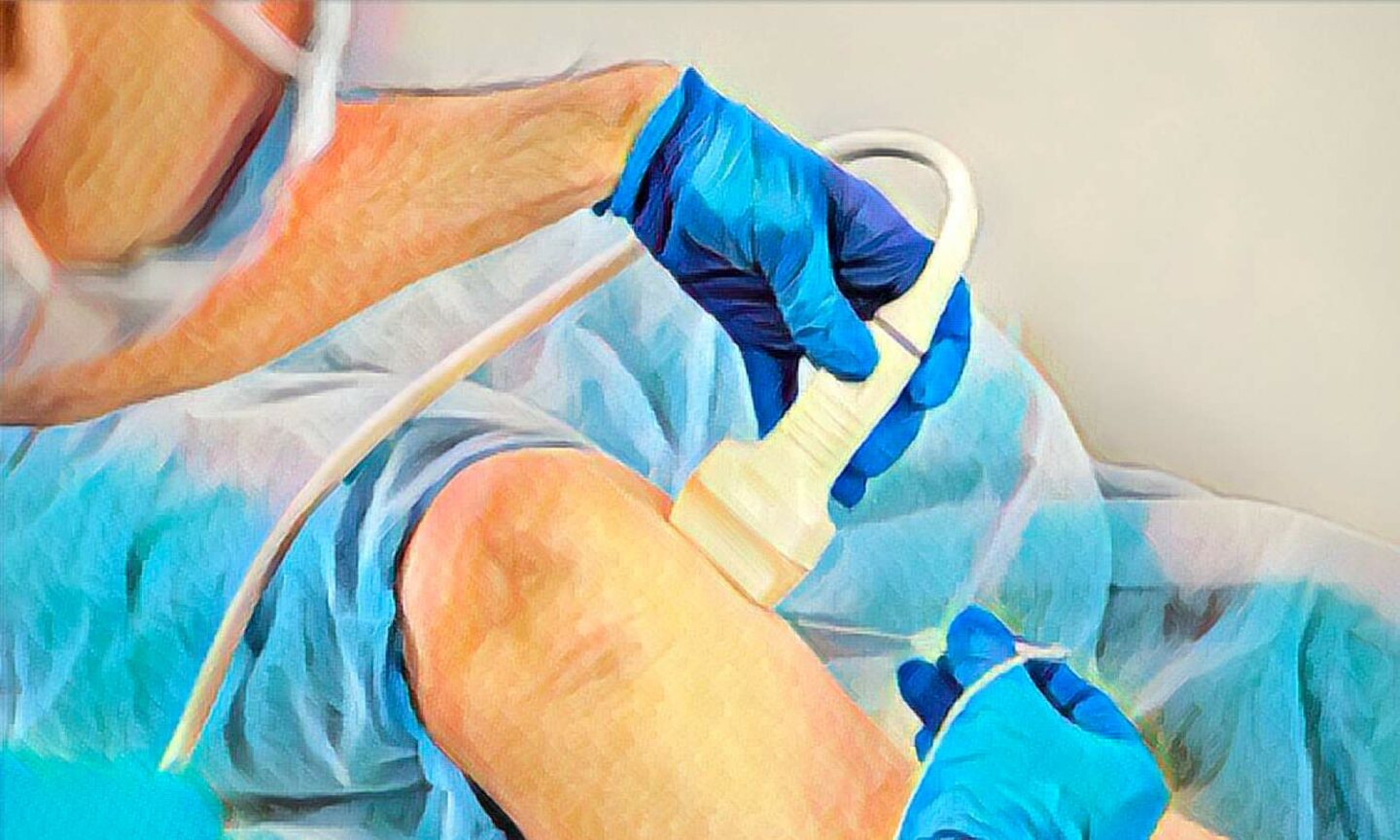Rhizotomy for pain relief Different rhizotomies at Pain Specialists WA in Perth
At Pain Specialists WA, we understand the debilitating impact of chronic pain on your daily life. Rhizotomy is a specialised procedure that targets and interrupts the nerves responsible for transmitting pain signals and provides long-lasting relief for various chronic pain conditions.
Call Pain Specialists WA in Perth:

What is a rhizotomy?
Rhizotomy is a highly specialised technique and is often used to treat chronic pain conditions involving your back, neck, shoulders, knees, groin, chest, pelvis and other peripheral nerves.
Rhizotomy is also known by other names such as:
- Radiofrequency ablation
- Denervation
- Neurotomy
It’s a minimally invasive procedure in which we ablate the nerve responsible for causing or transmitting pain. Basically, we use cold, heat or electric pulses to create a disruption in the nerves responsible for transmitting pain signals. It is not a first-line treatment, so usually you would have tried more conservative options before having a rhizotomy.
Let’s take an example of a patient who has back pain from facet joint arthritis. Small nerves around the facet joint start transmitting pain signals to the brain. Through rhizotomy, a disruption – in this case a lesion – is generated at the site of these small nerves so they can’t send pain signals to the brain. In most cases, the patient experiences an immediate pain relief.
Rhizotomy can be used not only for back pain, but for a whole range of chronic conditions.
Three rhizotomy techniques
There are three different rhizotomy techniques.
During thermal rhizotomy, or “hot” rhizotomy, the tip of a specially designed needle generates heat up to 90 degrees. Heat energy generates a lesion around the desired spot. This is a very effective technique that will give you months of pain relief.
The pain relief may not start immediately. In fact, one in four patients experiences a pain flare-up lasting between 4-6 weeks. This is very normal, and taking extra painkillers is sufficient to manage this flare-up. Then, gradually, the pain subsides, and patients notice reduced pain relief.
It is commonly used for facet joints of the spine, hip joints, and knee joints.
Also known as “cold” rhizotomy, the tip of a specially designed probe is cooled down to freezing temperatures. This is a very effective technique to give patients months of pain relief.
Although the pain relief may not start straight away, the subsequent pain flare-up is typically less severe compared to thermal rhizotomy.
Cryo rhizotomy can be used for a variety of conditions, including facet joints, hip/knee/shoulder joints, to help with occipital neuralgia, and sometimes in other parts of the body such as ribs.
Pulsed rhizotomy involves using an electric current to selectively target the nerves that are transmitting pain signals. Instead of creating a lesion or burning the nerve, it uses intermittent bursts, or ‘pulses’ of electrical energy. Generally, the duration of pain relief is not as long as in other rhizotomies. However, it is safe, doesn’t cause a lesion, has fewer risks such as nerve damage, and can be used in a variety of conditions.
At Pain Specialists Perth, we prefer this technique for neck pain coming from facet joints, in younger patients, or cases where we think the pain flare-ups could be too severe.
Each technique has special indications, and it’s up to the pain specialist to decide which one is best for your individual case. At Pain Specialists WA in Perth, we will always explain the different options so you understand which one is best for you.
Rhizotomy and pain location
- Cervical rhizotomy targets the nerves in your neck to alleviate pain there, or pain that originates in the neck but is referred to your shoulders and arms.
- Thoracic rhizotomy treats the nerves in the middle back to address pain in that region and possibly the chest and abdomen.
- Lumbar rhizotomy focuses on the nerves in the lower back and aims to relieve pain in that region as well as the hips, buttocks and legs. Sacral rhizotomy targets the nerve in the lower part of your spine, the sacral region near the tailbone. This is to address pain in the sacroiliac joints, buttocks, pelvis and lower extremities.
Risks of pain management procedures

Like any medical procedure, injections performed for pain management, do come with certain risks. Some of the risks are more frequent that others, such as temporary increase in the pain (pain flare up), soreness at the site of injection, bruises or swellings.
- Pain flare up. It is not uncommon to have temporary discomfort after certain procedures. It is commonly observed after thermal rhizotomy. Other procedures such as nerve root sleeve injection can cause temporary pain flare up. A short course of pain medication often settles down these symptoms.
- Headache. Risk of developing headache after epidural or nerve root sleeve injections is around 1 in 100 cases. If it happens, few days of rest, hydration and simple pain killers often is sufficient. Come cases may require a repeat of epidural injection to help with the headache.
- Temporary numbness. This often occurs due to the local anaesthetics which numbs the nerves. The sensation will return once the local anaesthetics is worn off.
- Difficulty controlling bladder and low blood pressure. They may occur after epidural injection. Sometimes you may need intravenous fluid or a temporary catheter. These symptoms resolve by itself once the local anaesthetics is worn off.
It is very hard to give an accurate statistics for each of the below complications. I quote 1 in 2,000 case to be a rare complication. These are:
- Infection: At the site of injection or in the body.
- Bleeding or haematoma: Sometimes, you may bleed too much and end up having a haematoma which is a blood collection in the tissue. It is important to let us know if you are taking any blood thinning medications, fish oil, or herbal medicine. Taking aspirin is ok, but you may need to stop other tablets prior to the procedure.
- Nerve damage: Procedures targeting the nerves can sometimes inadvertently damage them, which might lead to increased pain or numbness. Unintended nerve damage is relatively rare.
- Medication reactions: Pain management often involves medications that could cause allergic reactions or side effects in some patients.
- Injury to the lung: Some procedures are done very close to the lungs. Inadvertent puncture of the lung can cause lung collapse needing other treatments and staying at hospital for a period of time.
- Complications from anaesthesia: While it is generally safe, there are inherent risks associated with its use, such as breathing difficulties or allergic reactions. Serious complications from anaesthesia are rare, because a thorough pre-assessment is conducted allowing us to minimise the risk.
- Limited effectiveness: Not all treatments will work equally well for everyone, and there’s a chance that a procedure might not provide the expected relief.
I quote this to be around 1 in 20000
- Permanent nerve injury
- Spinal cord damage and paralysis
- Severe drug reaction (anaphylaxis)
- Hole in the bladder, bowel
- Stroke and blood clots
At Pain Specialists WA, we inform you about the risks associated with the treatments and we allocate time to answer your questions.
Pain Specialists WA for rhizotomy
Pain Specialists WA in Perth is a pain management clinic located in Nedlands and Murdoch. Consultations are available at Hollywood Medical Centre in Nedlands and at Wexford Medical Centre in Murdoch.
Call Pain Specialists WA in Perth or request an appointment online.
